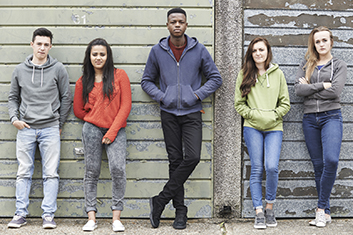
According to the Centers for Disease Control (CDC), more than 41,000 people die by suicide each year in the United States. Suicidal behaviors often result from experiencing humiliation and shame, lack of support from family members, failure to meet expectations or from environmental factors. Although there are many services available—crisis hotlines, therapists, support groups—to those experiencing thoughts of suicide, the decision to seek help can be influenced by a person’s cultural background.
“Just like there are cultural influences on one’s view of physical health, there are cultural influences on how individuals might view their mental health distress,” explains Senior Director of Education and Prevention of American Foundation for Suicide Prevention, Doreen S. Marshall, Ph.D.
For example, in African American and American Indian culture, environmental factors often increase the likelihood of suicidal behavior.
An article published in the International Journal of Child Health and Human Development in 2008 explains that 15 to 34 year-old African American males living in impoverished urban areas had an increased rate of suicide compared to those living in suburban areas. Another article published the same year in American Psychologist described how American Indian youths who live on reservations often face isolation and economic deprivation, which can lead to high suicide ratings.
“We know that prolonged stress can exacerbate an existing depression or precipitate a new depressive episode,” states Dr. Marshall. “Posttraumatic stress disorder is also connected to a higher risk for suicide, and we know that for some people, trauma is experienced in the environments in which they live.”
Although not specific to one culture, some cultures are prone to brush off symptoms and consider them signs of a personal weakness or moral feeling.
Erica Frias, a 23 year-old Hispanic woman who has dealt with OCD, generalized anxiety, depression and PTSD after experiencing major trauma from an accident when she was young explains that it was hard for her parents to understand what she was going through and never gave her the support that she needed. Her father emigrated from Mexico and her mother was a political refugee from Cuba.
According to Frias, they didn’t really understand what mental health was. “I think my parents didn’t have time to think about anxiety or depression and they just trucked on with their lives despite personal feelings. In my case, I didn’t have those same struggles they did. I grew up in a good household—although tumultuous at times—and went to school and money wasn’t an issue. I guess to them it was more of ‘why do you feel that way when other people have it harder than you’?” She figured that they were trying to encourage her, but it made her feel guilty for things that were out of her control.
Erica explains that her parents thought that she was putting on an act. “By the time I was an adult it was just an overstuffed trash can of issues. I did understand that I wasn’t normal, but my requests for counseling were denied. Why I’ll never really know—maybe it was the shame.”
How someone views a mental health condition, and whom they view as ‘helpers’ when they are distressed, can also be culturally influenced. This fear of reaching out can limit the number of people to which a person chooses to reach out. Provide information and resources to people who are looked upon as sources of support can make all the difference.
“We may need to reach out to helpers such as religious or spiritual leaders within their communities about warning signs and how to connect individuals to the help they need,” suggests Dr. Marshall.
The article titled published in the Journal of Black Psychology in 2006 found evidence that supports this idea. African Americans who were more actively involved in church, tended to feel less hopeless and reported more reasons for wanting to live than those who did not go to church.
Co-founder and President of National Organization for People of Color against Suicide (NOPCAS), Donna Barnes, Ph.D., stated, “the three important things to have is involvement, commitment and a belief system.” She explains that if children have access to churches or are involved in after school activities and the community and stay attached with their family, feelings of hopelessness will decrease and they will have more of a reason to live.
“When someone expresses thoughts of suicide, regardless of ethnic or cultural background, it is something to take seriously,” says Dr. Marshall. “Suicide occurs across cultural groups and it is important that we be vigilant for the possibility of suicide in all ethnic groups.”

